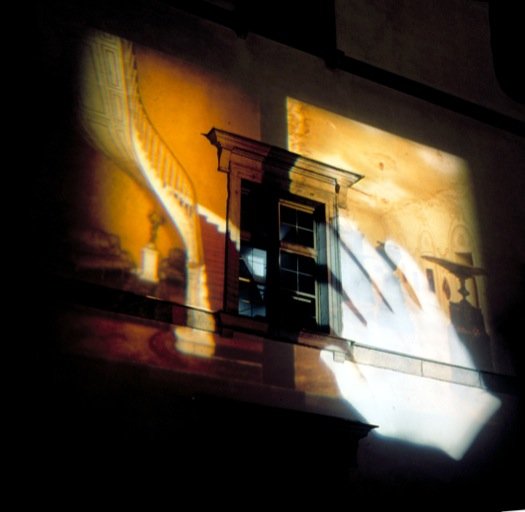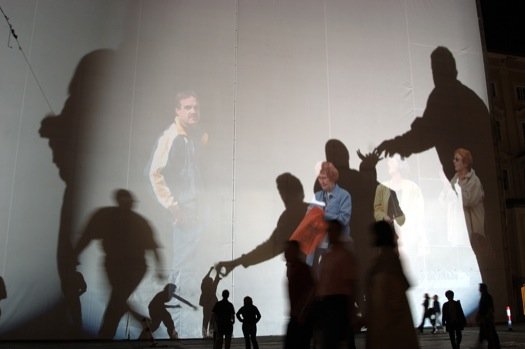Relational Architecture
“the technological actualisation of buildings and
the urban environment with alien memory”
Reading some of his interviews, he coined the termed relational architecture because he felt that “interactive” has become too vague. Essentially, my interpretation is that “relational architecture” just refers to “interactive architecture”.
In his interactive architecture, he “transforms the dominant narratives of a specific building or urban setting by superimposing audiovisual elements to affect it, effect it and recontextualise it.”
Interpreting this in my own way, my understanding is that he juxtaposes audio and visuals onto an architecture to change the meaning of that building.
How does this relate to Interactive Spaces? I guess it brings into question how an interactive installation impacts the meaning of a space. Does it change the purpose of the space? Does it give new meaning?
Lozano-Hemmer’s works can be described as a mixture of interactive and performance art – “Lozano-Hemmer invites the spectator performatively to imagine and construct alternative bodies – physical, architectural and urban.”
Displaced Emperors, Relational Architecture 2

“In Displaced Emperors, even the body of the participant becomes vulnerable to appropriation as it is tracked by the cultural property symbol.”
Cultural property symbol = “is the only type of marking recognized under international law for protecting cultural property during a period of armed conflict.”
I may interpret this wrongly but I’m guessing Lozano-Hemmer was trying to show the shared culture between these two countries and how they are interlinked. In a way, I would consider it a little satirical, as he imposes the cultural property symbol onto participants to show the ridiculousness of culture appropriation.
This theme doesn’t exactly come in handy in Interactive Spaces, but what we can learn from this installation is how he brought different elements into the existing architecture thus transforming the building. The piece is not just for some visual pleasures, it is speculative in a sense that it gets people thinking and questioning.
Especially in an interactive space, I believe it is important that participants leave that space with a thought in my mind rather than leave blindly with just an Instagram photo to post.
Body Movies: Relational Architecture 6

“challenged this passive spectatorship of the mediated city with projection.”
A key thing we can learn from this artwork is how the work may not function the same way in different spaces.
As shown in this piece, there were different reactions to the artwork in different countries, furthermore, the reactions may not be what is expected.
Thus, when building an interactive space, the context or background of the location should always be taken into consideration. A question that we could think about when planning the location of the artwork is “will this artwork function differently in someplace else?”
Conclusion
In the majority of his artworks, it requires “bodily participation of the viewers in order to manifest and behave”. Thus the technological and performative aspect are interlinked and can only exist with the other. Through that, they begin to question their relationship with the machine.
For the final project where technology is added into the mix, I believe it would come in handy if we also look into the relationship between our participants and the technology.
